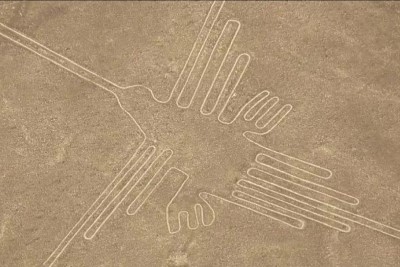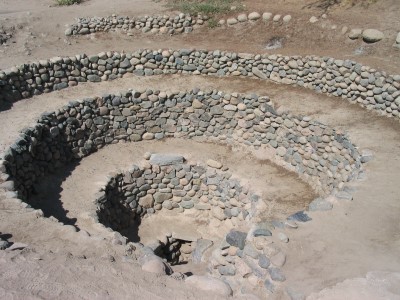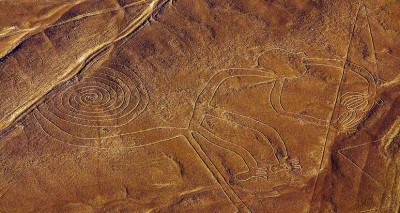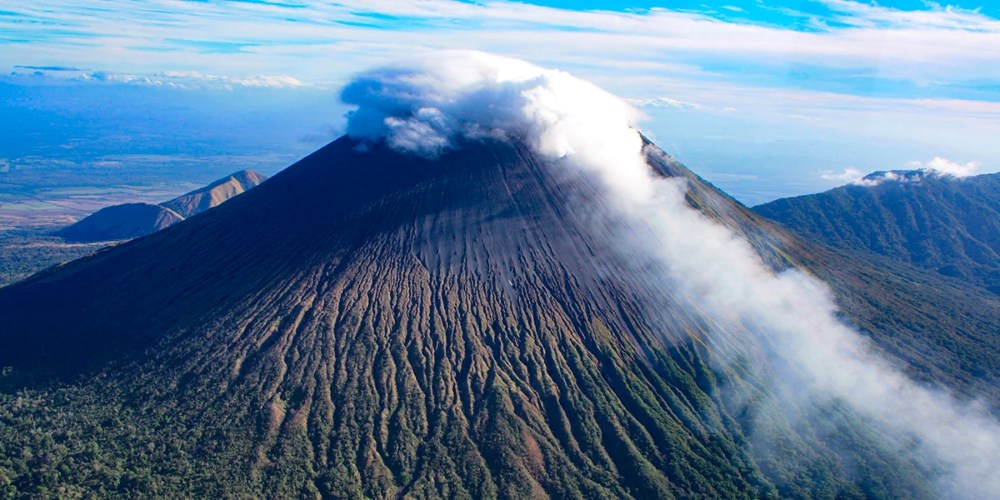Émergeant du sable du désert péruvien, les énigmatiques lignes de Nazca racontent une histoire ancienne, mêlant ingéniosité humaine et mystères célestes, et interpellent chaque observateur par leur grandeur. Ces immenses géoglyphes, gravés dans le sol, représentent une variété d’animaux, de plantes, d’objets et de formes géométriques, et continuent de fasciner le monde.
Le Peuple Nazca

Les Nazcas étaient une civilisation précolombienne qui a prospéré entre 200 av. J.-C. et 800 ap. J.-C. dans la région aride du sud du Pérou. Ils sont surtout connus pour les géoglyphes fascinants qu’ils ont gravés dans le désert, préservés pendant des siècles grâce à l’environnement sec et stable dont la signification exacte demeure un mystère captivant pour les chercheurs et les amateurs d’histoire. Mais les Nazcas étaient bien plus qu’une civilisation de dessinateurs de lignes. Avec une précision remarquable, sans l’aide de la technologie aérienne, ils ont tracé ces motifs gigantesques, démontrant une maîtrise exceptionnelle. Ils étaient également des artisans habiles, créant des poteries détaillées et des textiles colorés qui témoignent de leur sens artistique développé. Leur ingéniosité ne s’arrêtait pas là ; ils ont également conçu des systèmes d’irrigation avancés. Ces réalisations diverses reflètent une société qui était à la fois organisée, ingénieuse et artistiquement riche.
Les Théories sur les Géoglyphes

Bien que la véritable raison d’être de ces géoglyphes demeure un mystère, les scientifiques et les chercheurs ont avancé plusieurs explications fascinantes au fil des dernières décennies. Chacune d’elles tente d’éclairer un aspect de ces créations, mais le mystère global persiste, ajoutant à l’attrait des lignes. Voici les principales théories :
- Calendrier Astronomique : Certains chercheurs pensent que les lignes étaient utilisées comme un calendrier astronomique et une carte du ciel, avec des motifs correspondant à des constellations ou à des événements célestes.
- Site Rituel : D’autres émettent l’hypothèse que les géoglyphes avaient une signification religieuse ou rituelle, servant peut-être de lieux de pèlerinage ou de cérémonies.
- Cartographie des Sources d’Eau : Une autre théorie suggère que les lignes indiquent l’emplacement des sources d’eau souterraines, essentielles à la survie dans cet environnement aride. Les Nazcas ont en effet construit de nombreux puits, reliés entre eux par un réseau d’aqueducs souterrains, dont certains habitants actuels se servent encore.
La Gardienne des Lignes

Maria Reiche, une mathématicienne et archéologue allemande, arrivée dans les années 30 dans le pays, a consacré plus de 50 ans de sa vie à l’étude, à la mesure et à la préservation des lignes de Nazca. C’est elle qui a développé la théorie selon laquelle les géoglyphes étaient liés à l’astronomie. En effet certaines lignes indiquent la position exacte du soleil levant et couchant pendant les solstices d’été et d’hiver, les Nazcas auraient utilisé ces éléments notamment pour l’agriculture. Aujourd’hui, le Musée Maria Reiche, rend hommage à son travail acharné, présentant ses découvertes, ses outils de recherche et sa vie dédiée à la protection de ce patrimoine mondial reconnu par l’UNESCO.
Nouvelles Découvertes et Menaces Actuelles
Avec l’avènement de la technologie moderne, de nouveaux géoglyphes sont régulièrement découverts. Cependant, ces trésors archéologiques sont menacés par l’érosion, le changement climatique et l’activité humaine. La préservation de ces motifs anciens est essentielle pour les générations futures et pour la compréhension de cette énigme archéologique.
Observer les Géoglyphes de Nazca

Pour vraiment apprécier l’ampleur et la complexité des géoglyphes de Nazca, il existe plusieurs méthodes d’observation. La plus populaire est sans doute le survol en avion, qui offre une vue panoramique inégalée de ces chefs-d’œuvre gravés dans le désert. Pour ceux qui préfèrent rester au sol, il y a des miradors situés à proximité de certains géoglyphes. Ces points de vue offrent une perspective différente mais toujours impressionnante, cependant l’observation par ce biais sera limitée à deux ou trois figures seulement.
De Keith Haring, dont une partie de l’œuvre en est inspirée à Steven Spielberg dans l’un des opus d’Indiana Jones, des scientifiques du monde entier aux voyageurs curieux de découvrir ces vestiges uniques, les lignes de Nazca, avec leur beauté mystérieuse et leur histoire ancienne, continuent d’être un sujet de fascination et d’étude, une étape à ne pas manquer dans la découverte du fabuleux Pérou.







